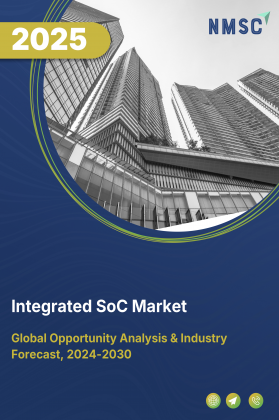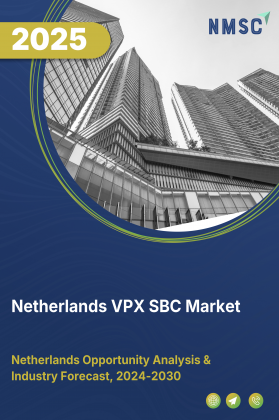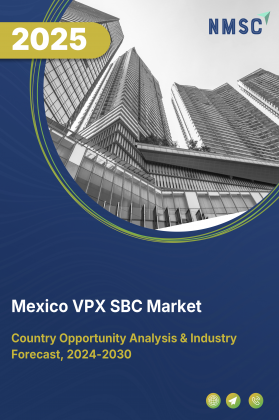
Integrated SoC Market by Type (Digital SoC, Analog SoC, Mixed-Signal SoC), by Processor Core (Microcontroller-based SoC, Microprocessor-based SoC), by Primary Function (General Compute SoC, Communication SoC), by Technology Node (≤7nm, 8–14nm, 15–27nm, ≥28nm), by Application (Smart Consumer Devices, 5G Infrastructure & Mobile Networks and Others), and by End-User (Automotive, Consumer Electronics, Telecom) – Global Opportunity Analysis and Industry Forecast, 2025–2030
Industry Outlook
The global Integrated SoC Market size was valued at USD 211.52 billion in 2024, with an estimation of USD 230.14 billion in 2025 and is predicted to reach USD 350.86 billion by 2030 with a CAGR of 8.80% from 2025-2030.
The market is witnessing strong growth driven by the rising adoption of smartphones, consumer electronics, and connected devices across homes, industries, and healthcare. Increasing demand for compact, high-performance chips that integrate processing, memory, and connectivity is fuelled by the proliferation of IoT devices, wearable gadgets, and smart home appliances.
The automotive sector, with its growing focus on advanced driver-assistance systems (ADAS), electric vehicles, and autonomous technologies, further supports market expansion. Despite challenges posed by the complexity and high cost of chip design, emerging opportunities in AI and machine learning-enabled devices are encouraging innovation, enabling manufacturers to deliver energy-efficient, multifunctional SoCs across consumer, industrial, and automotive applications.
Rising Smartphone and Consumer Electronics Adoption Drives the Market Growth
One of the drivers of the integrated SoC market growth is the rapid growth in smartphone and consumer electronics usage. With nearly every household and individual relying on smartphones, tablets, smart TVs, and wearable devices, there is a strong demand for compact, high-performance chips that integrate multiple functions, such as processing, memory, and connectivity, into a single solution.
This integration not only enhances device performance and battery efficiency but also reduces manufacturing costs, making integrated SoCs essential for meeting the growing consumer expectations for powerful, energy-efficient, and feature-rich electronic devices.
Expansion of IoT and Smart Devices Boost the Market Demand
The growing adoption of Internet of Things (IoT) and smart devices is a significant driver of the integrated SoC market demand. Across homes, industries, and healthcare, devices such as smart home appliances, wearable health monitors, industrial sensors, and connected gadgets are becoming increasingly common.
IoT SoC solutions, which combine processing, memory, and connectivity into a single chip, enable these devices to operate efficiently while minimizing power consumption and size. This rising demand for connected and intelligent devices is fuelling the need for compact, multifunctional chips, thereby driving growth in the integrated SoC market.
Expansion of Automotive Electronics and ADAS Fuels Market Expansion
The expansion of automotive electronics and advanced driver-assistance systems (ADAS) is a key driver of the integrated SoC market expansion. Modern vehicles increasingly feature smart infotainment systems, sensor networks, navigation aids, and autonomous driving technologies, all of which require compact, high-performance, and energy-efficient chips.
AI-powered SoCs, which combine processing, memory, and connectivity on a single chip, enable automakers to deliver these advanced functionalities while reducing power consumption and simplifying system design. This growing trend toward connected, electric, and autonomous vehicles is accelerating the demand for integrated SoCs in the automotive sector.
Complexity and High Cost Involved in Chip Design Limits the Market Growth
A major restraint of the market is the complexity and high cost involved in chip design and manufacturing. Developing integrated SoCs involves combining multiple functions, such as processors, memory, and connectivity, onto a single chip, which requires advanced fabrication technologies, skilled engineering, and extensive testing.
These factors increase development time and costs, making it challenging for smaller players to compete. Additionally, any design flaws lead to significant production losses, limiting rapid adoption and acting as a constraint on overall integrated SoC market growth.
Growing Demand for AI-Enabled Devices Unlocks New Growth Opportunities
A significant opportunity in the market is the growing demand for artificial intelligence (AI) and machine learning (ML)-enabled devices. As applications like smart assistants, autonomous vehicles, advanced robotics, and edge computing expand, there is a need for chips that perform complex AI computations efficiently and on-device.
Integrated SoCs that combine high-performance processors, memory, and specialized AI accelerators provide a compact, energy-efficient solution. This trend presents a major opportunity for chip manufacturers to innovate and capture market share by delivering SoCs optimized for AI and ML workloads across consumer, industrial, and automotive sectors.
Market Segmentations and Scope of the Study
The integrated SoC market report is segmented on the basis of type, processor core, primary function, technology node, application, end-user and region. By type, the market includes Digital SoCs, Analog SoCs, and Mixed-Signal SoCs. Based on processor core, it is categorized into Microcontroller-based SoCs, Microprocessor-based SoCs, Digital Signal Processor-based SoCs, and Application-Specific Integrated Circuit (ASIC)-based SoCs. In terms of primary function, SoCs are grouped into General Compute SoCs, Communication SoCs, Graphics and Multimedia SoCs, Artificial Intelligence and Neural Processing SoCs, and Power and Control SoCs. By technology node, the market is divided into ≤7nm, 8–14nm, 15–27nm, and ≥28nm. By end-user, the market includes Automotive, Consumer Electronics, Telecom, Healthcare, Aerospace & Defence, and Energy & Utilities, with regional analysis covering Asia-Pacific, North America, Europe, and the Rest of the World.
Geographical Analysis
A major driver of the integrated SoC market share in North America is the surging demand for high-performance, energy-efficient consumer electronics, particularly smartphones. According to the Pew Research Center in 2024, nearly 91% of Americans own a smartphone, and 98% own some type of cellphone. This widespread adoption fuels the need for compact, multifunctional chips that integrate processing, memory, and connectivity onto a single SoC, enabling lower power consumption, reduced costs, and improved device performance, which in turn accelerates market growth.
One key driver of the integrated SoC market trends in Europe is the rising demand for connected and smart devices in both consumer and industrial sectors. European consumers are increasingly adopting smartphones, wearables, smart home appliances, and other IoT-enabled devices, while industries are integrating sensors and automation technologies for smart manufacturing. Integrated SoCs, which combine processing, memory, and connectivity into a single chip, help meet this demand by improving device performance, reducing power consumption, and lowering production costs, thereby fuelling market growth across the region.
In Asia Pacific, a significant driver of the market is the rapid expansion of automotive electronics and advanced driver-assistance systems (ADAS). Automakers in countries like China, Japan, South Korea, and India are increasingly equipping vehicles with smart infotainment systems, sensor networks, and autonomous driving features, all of which require compact, high-performance, and energy-efficient chips. Integrated SoCs enable these automotive applications by combining processing, memory, and connectivity on a single chip, reducing power consumption, simplifying system design, and supporting the growing shift toward connected and electric vehicles across the region.
In the Rest of the World (ROW), a major driver of the market is the widespread rollout of 5G networks and enhanced mobile connectivity. As emerging regions in Latin America, the Middle East, and Africa deploy 5G infrastructure, there is increasing demand for smartphones, tablets, and IoT devices that take advantage of high-speed, low-latency connectivity. Integrated SoCs, which combine processing, memory, and communication capabilities on a single chip, enable efficient performance and energy savings in these 5G-enabled devices, driving adoption and market growth across ROW regions.
Strategic Innovations Adopted by Key Players
Key players in the integrated SoC industry are focusing on AI-driven innovations, advanced chip architectures, and strategic collaborations to enhance performance, efficiency, and integration across applications such as autonomous vehicles, edge computing, telecommunications, and consumer electronics.
-
In April 2025, Texas Instruments introduced a new portfolio of automotive lidar, clock and radar chips to help automakers transform vehicle safety by bringing more autonomous features to a wider range of cars.
-
In Feb 2025 Qualcomm unveiled the Snapdragon X platform scalable across form factors from laptops to tablets to mini-PCs. Qualcomm featured many interesting Snapdragon X Elite PC demos involving music applications and DJ hardware.
-
In March 2024, Toshiba has solidified its leadership in sustainable semiconductor practices by extending its carbon-neutral goals to supplier activities across the chip production chain. By working hand-in-hand with procurement teams and supplier partners, Toshiba aims to reduce Scope 3 emissions, those associated with purchased goods and services, emphasizing clean energy, efficient power semiconductor design, and lifecycle management.
-
In March 2024, MediaTek launches Dimensity Auto Cockpit platforms in partnership with NVIDIA DRIVE. The Dimensity Auto Cockpit portfolio offers powerful AI in-cabin experiences for the next generation of intelligent vehicles. The highly integrated platform consists of four new automotive SoCs,
Key Benefits
-
The report provides quantitative analysis and estimations of the market from 2025 to 2030, which assists in identifying the prevailing industry opportunities.
-
The study comprises a deep-dive analysis of the current and future integrated SoC market trends to depict prevalent investment pockets in the sector.
-
Information related to key drivers, restraints, and opportunities and their impact on the market is provided in the report.
-
Competitive analysis of the key players, along with their market share is provided in the report.
-
SWOT analysis and Porters Five Forces model is elaborated in the study.
-
Value chain analysis in the market study provides a clear picture of roles of stakeholders.
Integrated SoC Market Key Segments
By Type
-
Digital SoC
-
Analog SoC
-
Mixed-Signal SoC
By Processor Core
-
Microcontroller Based SoC
-
Microprocessor Based SoC
-
Digital Signal Processor Based SoC
-
Application-Specific Integrated Circuit Based SoC
By Primary Function
-
General Compute SoC
-
Communication SoC
-
Graphics and Multimedia SoC
-
Artificial Intelligence and Neural Processing SoC
-
Power and Control SoC
By Technology Node
-
≤7nm
-
8–14nm
-
15–27nm
-
≥28nm
By Application
-
Smart Consumer Devices
-
5G Infrastructure & Mobile Networks
-
Industrial Robotics & Automation Controllers
-
Medical Imaging & Wearable Health Devices
-
Smart Grid & IoT-Enabled Devices
-
Retail Automation & Logistics Optimization
-
Others
By End-User
-
Automotive
-
Consumer Electronics
-
Telecom
-
Healthcare
-
Aerospace & Defence
-
Energy & Utilities
-
Others
By Region
-
North America
-
The U.S.
-
Canada
-
Mexico
-
-
Europe
-
The UK
-
Germany
-
France
-
Italy
-
Spain
-
Denmark
-
Netherlands
-
Finland
-
Sweden
-
Norway
-
Russia
-
Rest of Europe
-
-
Asia-Pacific
-
China
-
Japan
-
India
-
South Korea
-
Australia
-
Indonesia
-
Singapore
-
Taiwan
-
Thailand
-
Rest of Asia-Pacific
-
-
RoW
-
Latin America
-
Middle East
-
Africa
-
Key Players
-
Broadcom Inc
-
MediaTek Inc
-
Microchip Technology Inc
-
Qualcomm Incorporated
-
Samsung Electronics Co. Ltd
-
STMicroelectronics NV
-
Toshiba Corporation
-
Renesas Electronics Corporation
-
Huawei Technologies Co Ltd
-
Maxim Integrated Products Inc
-
NVIDIA Corp
-
TSMC
-
Texas Instruments Inc.
Report Scope and Segmentation
|
Parameters |
Details |
|
Market Size in 2025 |
USD 230.14 billion |
|
Revenue Forecast in 2030 |
USD 350.86 billion |
|
Growth Rate |
CAGR of 8.80% 2025 to 2030 |
|
Analysis Period |
2024–2030 |
|
Base Year Considered |
2024 |
|
Forecast Period |
2025–2030 |
|
Market Size Estimation |
Billion (USD) |
|
Growth Factors |
|
|
Countries Covered |
28 |
|
Companies Profiled |
15 |
|
Market Share |
Available for 10 companies |
|
Customization Scope |
Free customization (equivalent to up to 80 working hours of analysts) after purchase. Addition or alteration to country, regional, and segment scope. |
|
Pricing and Purchase Options |
Avail customized purchase options to meet your exact research needs. |
















 Speak to Our Analyst
Speak to Our Analyst

























